Lecture 18 Advance Topics in Rendering¶
Advanced Light Transport¶
Advanced Light Transport¶
- Unbiased light transport methods
- Bidirectional path tracing (BDPT)
- Metropolis light transport (MLT)
- Biased light transport methods
- Photon mapping
- Vertex connection and merging (VCM)
- Instant radiosity (VPL / many light methods)
Biased vs. Unbiased Monte Carlo Estimators¶
- An unbiased Monte Carlo technique does not have any systematic error
- The expected value of an unbiased estimator will always be the correct value, no matter how many samples are used
- 估计出的结果的期望永远都是我们要的真实值
- Otherwise, biased
- One special case, the expected value converges to the correct value as infinite #samples are used - consistent
- 估计出的结果的期望和真实值不同
- An easier understanding bias in rendering
- Biased == blurry
- Consistent == not blurry with infinite #samples
Bidirectional Path Tracing (BDPT)¶
- Name: 双向路径追踪
-
Recall: a path connects the camera and the light (生成一些半路径)
- Traces sub-paths from both the camera and the light
- Connects the end points from both sub-paths
-
Pros
- Suitable if the light transport is complex on the light’s side
- unbiased
- Cons
- Difficult to implement
- quite slow
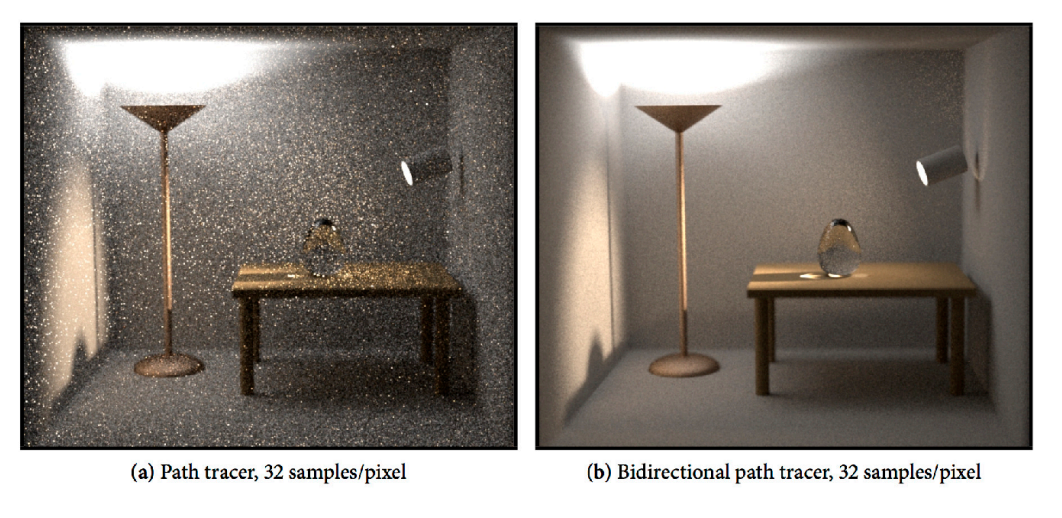
- 双向路径追踪好的原因:因为对于这个场景而言,从摄像机出发做 Path Tracing 第一个打到的地方是 diffuse 的表面,这就导致了之后的路径不容易到达能量集中的区域
- 而双向路径追踪适用于光线在光源处容易算的情况
Metropolis Light Transport (MLT)¶
- 思想:使用统计学上的马克可夫链(根据当前的样本生成一个和它靠近的下一个样本)做采样工具
- A Markov Chain Monte Carlo (MCMC) application
- Jumping from the current sample to the next with some PDF
- Very good at locally exploring difficult light paths
- Key idea: Locally perturb an existing path to get a new path

- Pros
- Works great with difficult light paths
- 找到一条光线作为种子,可以在它周围找到其他的光线
- unbiased
- Cons
- Difficult to estimate the convergence rate (收敛速率,也就是渲染速度难以分析)
- Does not guarantee equal convergence rate per pixel
- usually produces “dirty” results
- usually not used to render animations
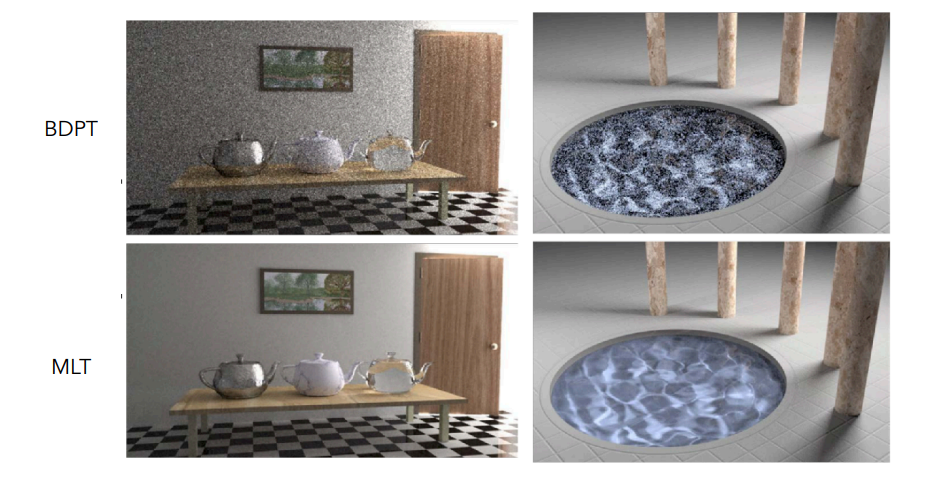
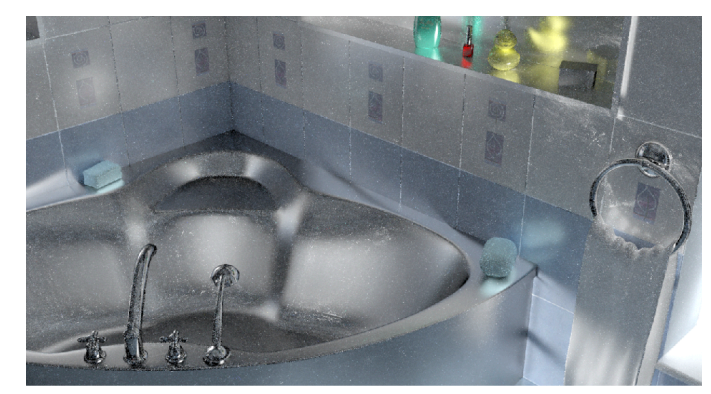
Photon Mapping¶
- A biased approach & A two-stage method
- Very good at handling Specular-Diffuse-Specular (SDS) paths and generating caustics
- caustics: 由于光线的聚焦产生的非常强的一些图案,例如水面的波纹
Approach (variations apply)¶
- Stage 1 — photon tracing
- Emitting photons from the light source, bouncing them around, then recording photons on diffuse surfaces(当光子打到 diffuse 的物体后停下)

- Stage 2 — photon collection (final gathering)
- Shoot sub-paths from the camera, bouncing them around, until they hit diffuse surfaces (当 sub-paths 打到 diffuse 的物体后停下)
- Calculation — local density estimation
- Idea: areas with more photons should be brighter
- For each shading point, find the nearest \(N\) photons. Take the surface area they over
- 计算光子的密度
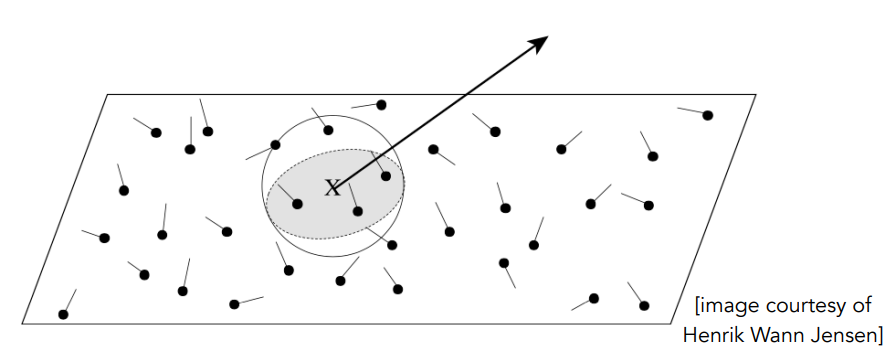
Why biased?¶
- Local Density estimation \(dN / dA \ne ΔN / ΔA\)
- But in the sense of limit
- More photons emitted \(\to\) the same \(N\) photons covers a smaller \(ΔA\) \(\to\) \(ΔA\) is closer to \(dA\) (So, biased but consistent!)
- Why not do a “const range” search for density estimation?
- More photons emitted \(\to\) in the same const range will have more photons \(\to\) \(ΔA\) is not closer to \(dA\) (So, biased and not consistent!)
Vertex Connection and Merging¶
- 结合双向路径追踪和光子映射
- Key idea
- Let’s not waste the sub-paths in BDPT if their end points cannot be connected but can be merged
- Use photon mapping to handle the merging of nearby “photons”
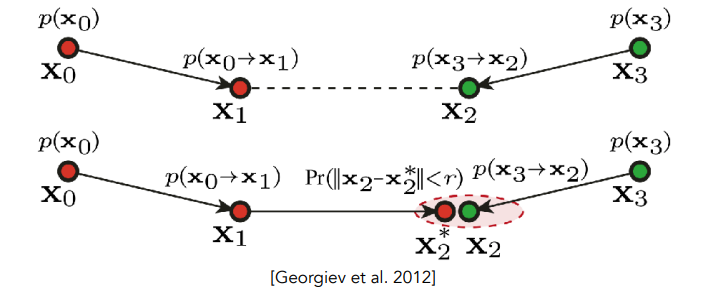
Instant Radiosity (IR)¶
- Sometimes also called many-light approaches
- Key idea
- Lit surfaces can be treated as light sources(已经被照亮的面也可以被认为是光源,生成 VPL 之后,使用直接光照就行)
- Approach
- Shoot light sub-paths and assume the end point of each sub-path is a Virtual Point Light (VPL)
- Render the scene as usual using these VPLs

- Pros: fast and usually gives good results on diffuse scenes
- Cons
- Spikes will emerge when VPLs are close to shading points (在窄的缝隙和接缝出有问题)
- Cannot handle glossy materials
Advanced Appearance Modeling¶
-
Non-surface models
- Participating media
- Hair / fur / fiber (BCSDF)
- Granular material
-
Surface models
- Translucent material (BSSRDF)
- Cloth
- Detailed material (non-statistical BRDF)
- Procedural appearance
Non-Surface Models¶
Participating Media¶
- Participating Media(散射介质): Fog, Cloud, Hair(考虑光线和一根曲线的作用)
- 不在表面上而是在空间中
- At any point as light travels through a participating medium, it can be (partially) absorbed and scattered.
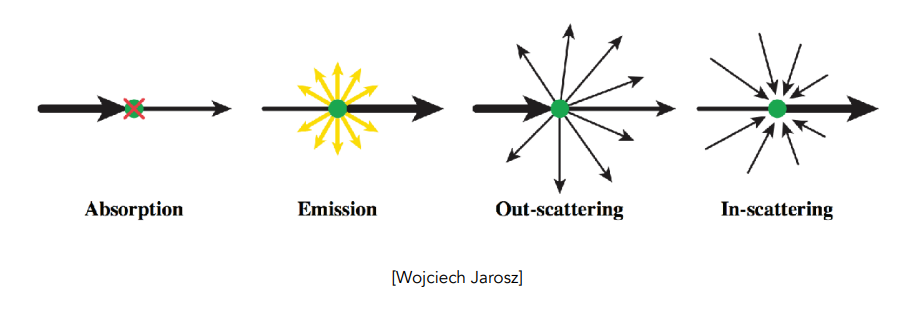
- Use Phase Function to describe the angular distribution of light scattering at any point x within participating media
- 决定光线如何散射

Participating Media: Rendering¶
- Randomly choose a direction to bounce
- Randomly choose a distance to go straight
- At each ‘shading point’, connect to the light
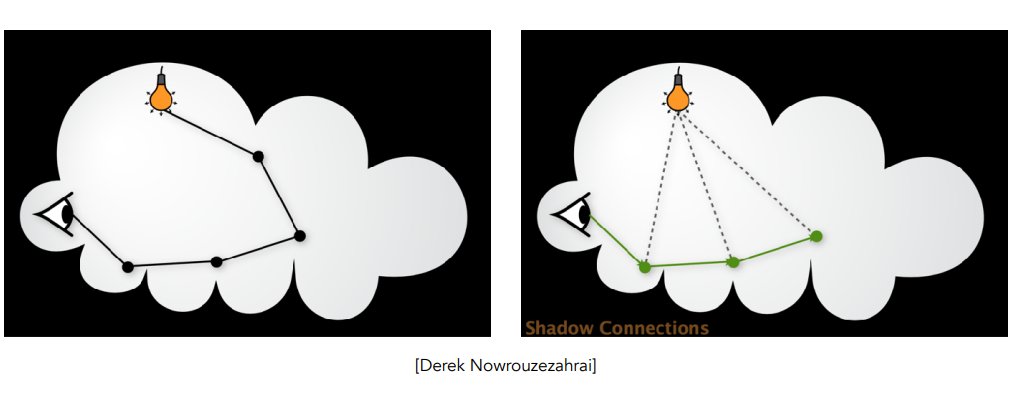
Hair Appearance¶
Kajiya-Kay Model¶
- 只考虑反射
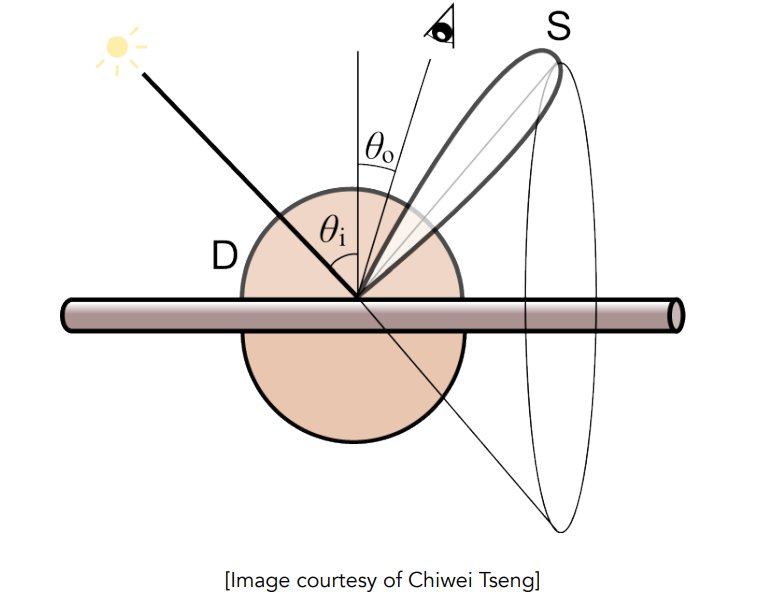
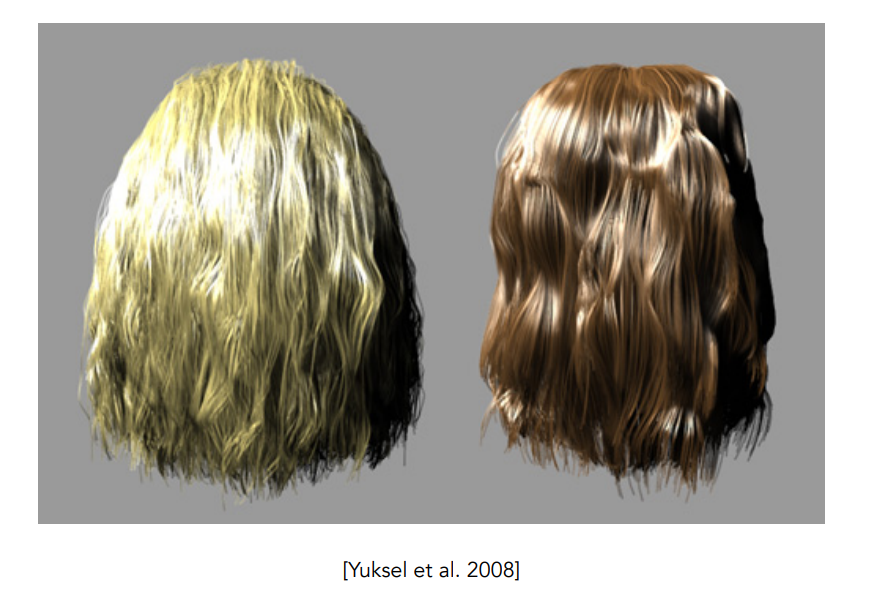
Marschner Model¶
- 考虑三种光线与头发圆柱的作用
- R: 光线被头发表面反射
- TT: 光线进入头发从头发另一侧折射出
- TRT: 光线从头发底面被反射,从入射一侧折射出
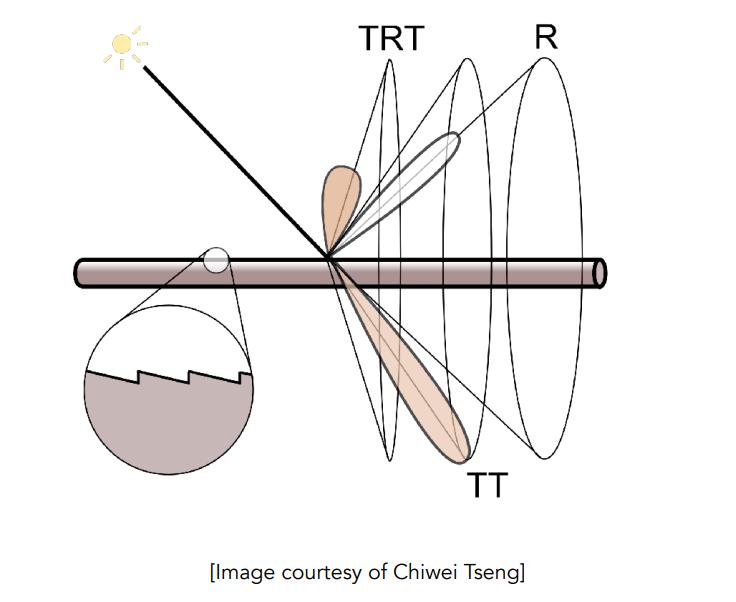
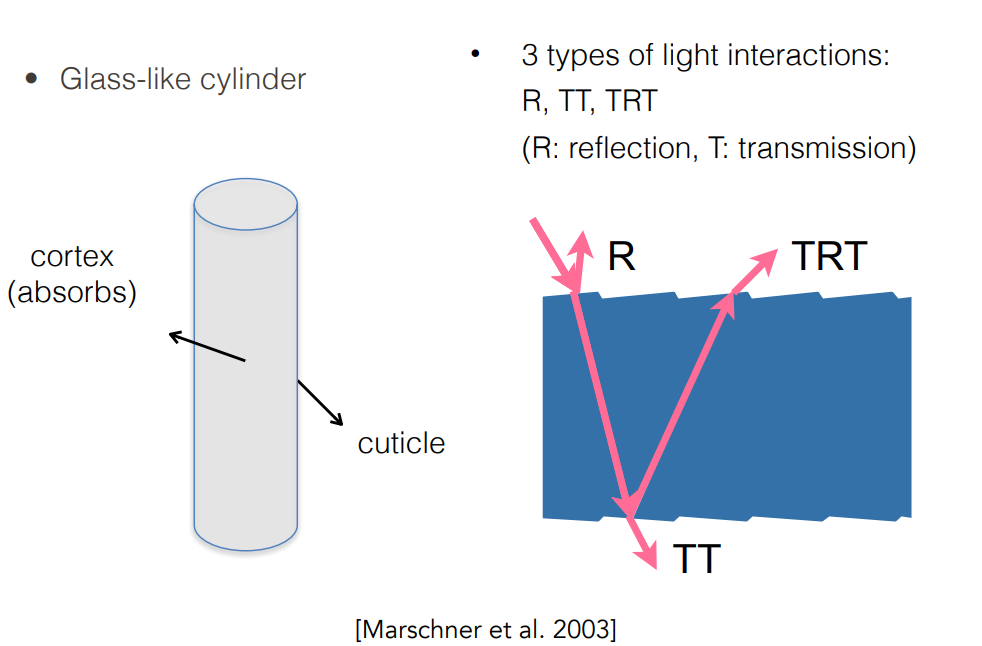
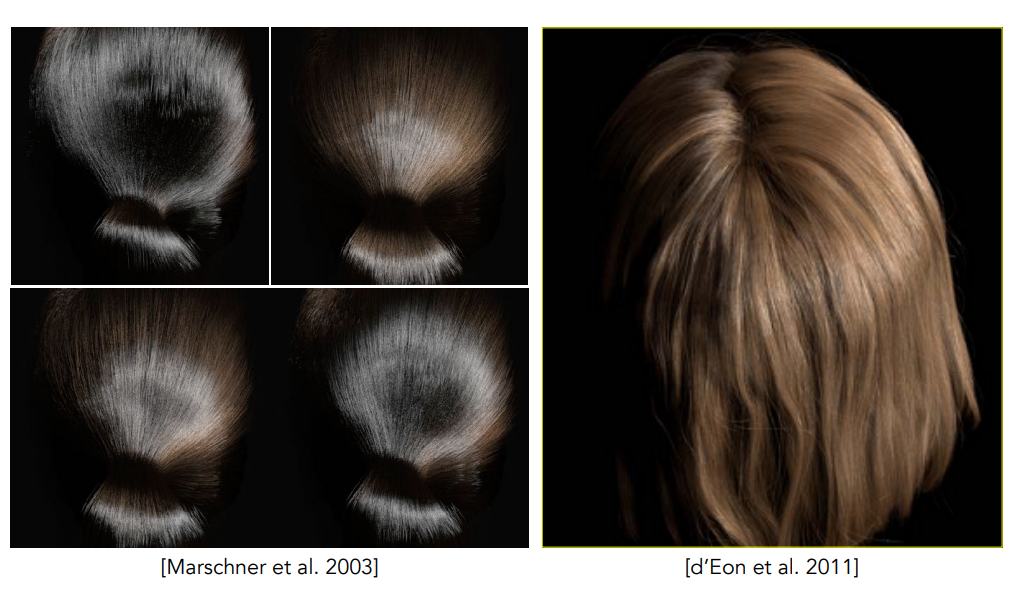
Fur Appearance — As Human Hair¶
- Cannot represent diffusive and saturated appearance
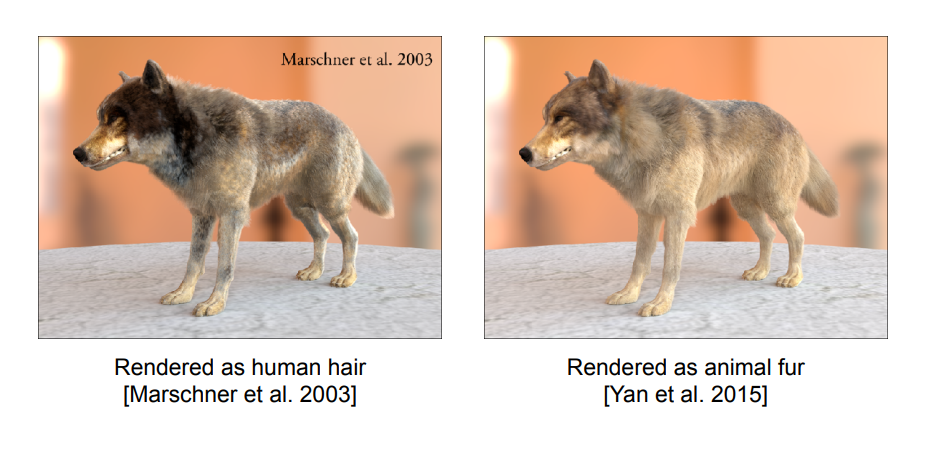
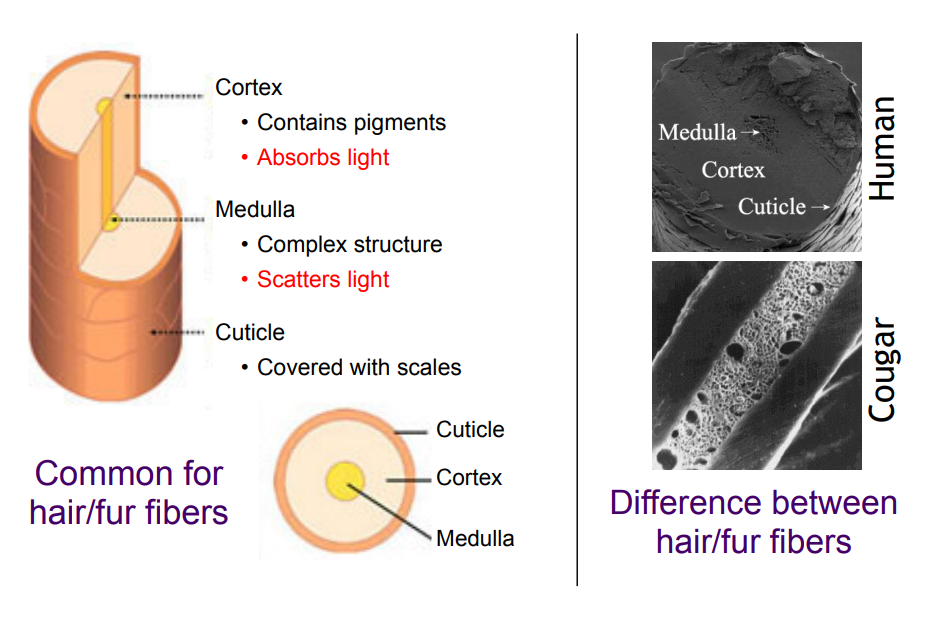
- 动物的 medulla size 大
Double Cylinder Model¶
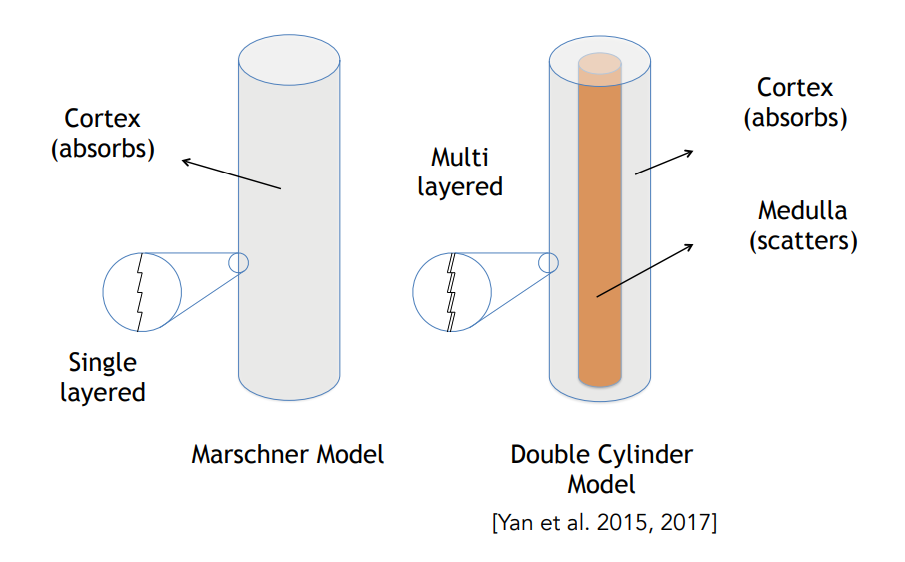
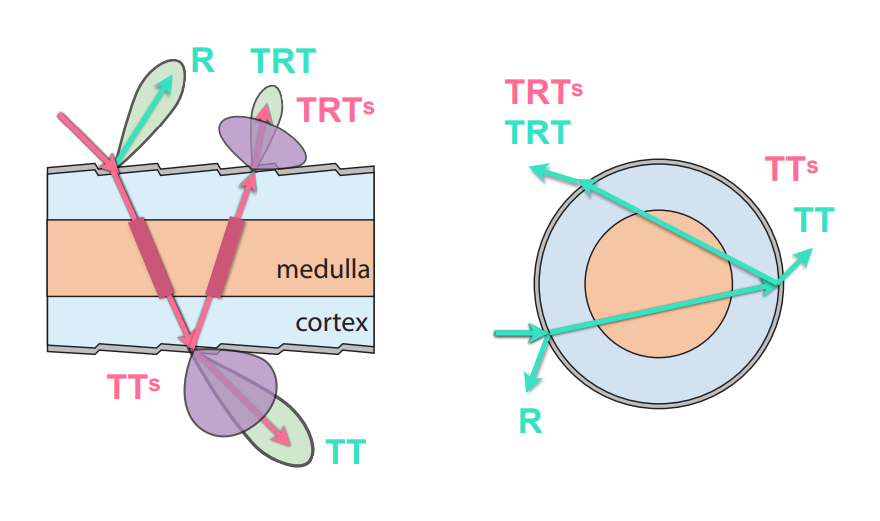
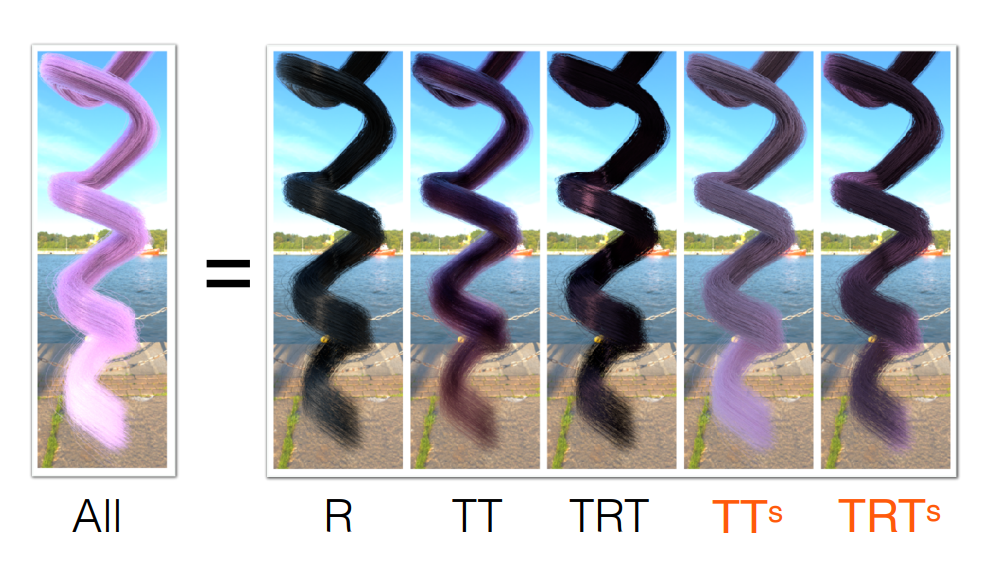
Granular Material¶
- 颗粒材质
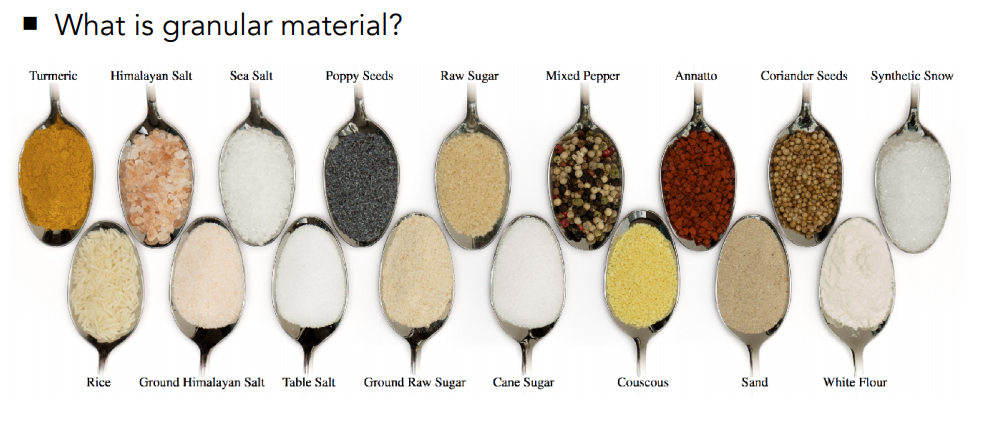
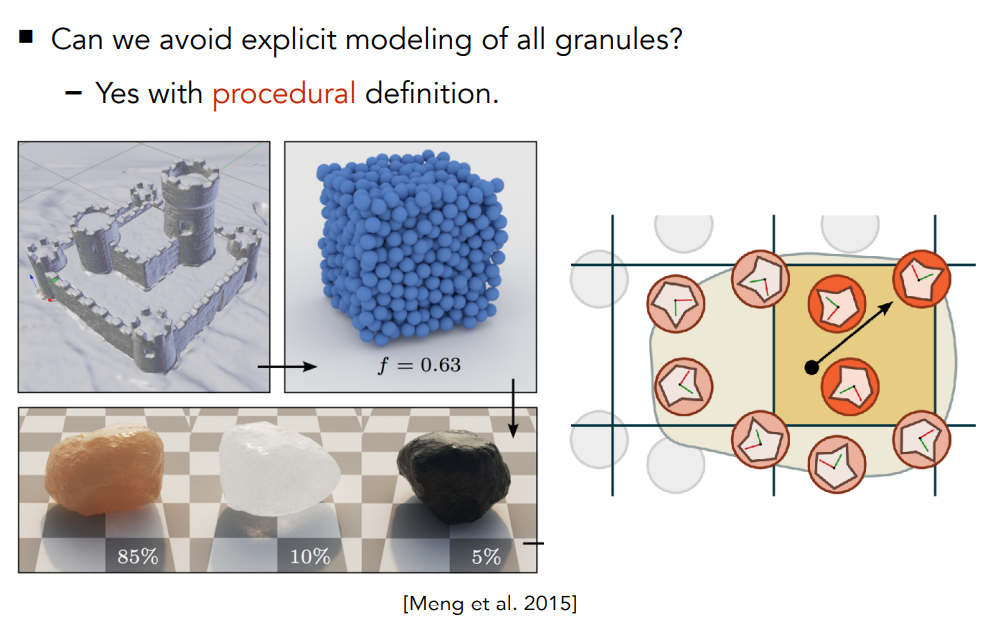
Surface Models¶
Translucent Material¶
- translucent: 光线可以从一个地方进入物体,从另外一个面钻出
- like: Jade, Jellyfish
Subsurface Scattering¶
- Visual characteristics of many surfaces caused by light exiting at different points than it enters
- 对 BRDF 的延申:从一个点进来,从另外一个其他点出去
Scattering Functions¶
- BSSRDF: generalization of BRDF; exitant radiance at one point due to incident differential irradiance at another point:
\[
S\left(x_i, \omega_i, x_o, \omega_o\right)
\]
- Generalization of rendering equation: integrating over all points on the surface and all directions (!)
\[
L\left(x_o, \omega_o\right)=\int_A \int_{H^2} S\left(x_i, \omega_i, x_o, \omega_o\right) L_i\left(x_i, \omega_i\right) \cos \theta_i \mathrm{~d} \omega_i \mathrm{~d} A
\]
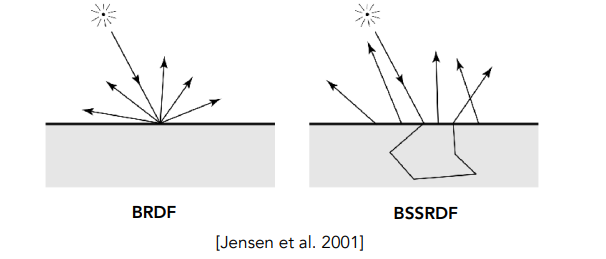
- Approximate light diffusion by introducing two point sources.
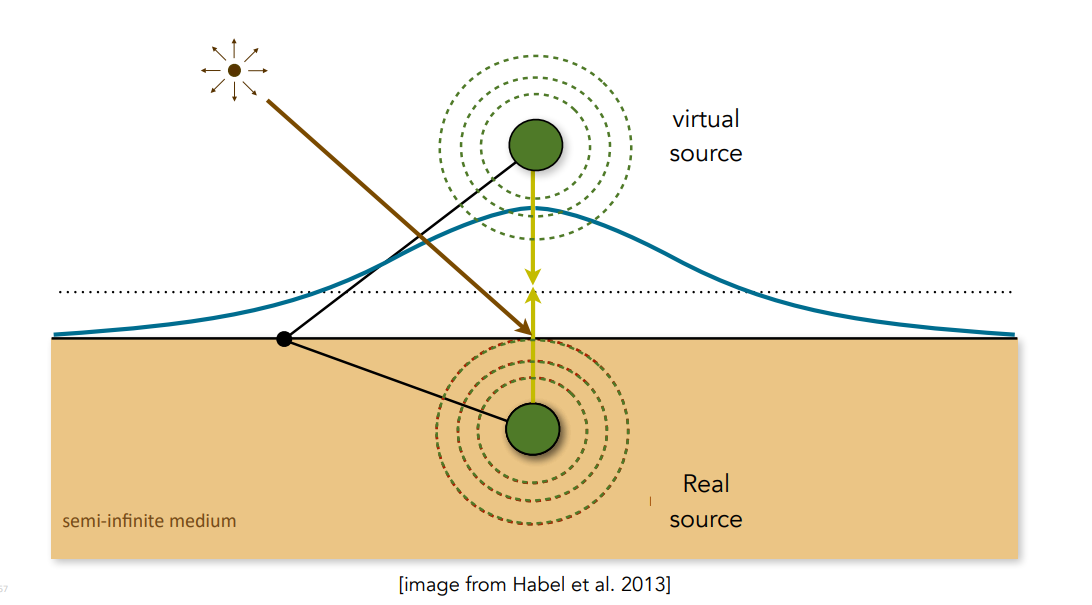
- Example
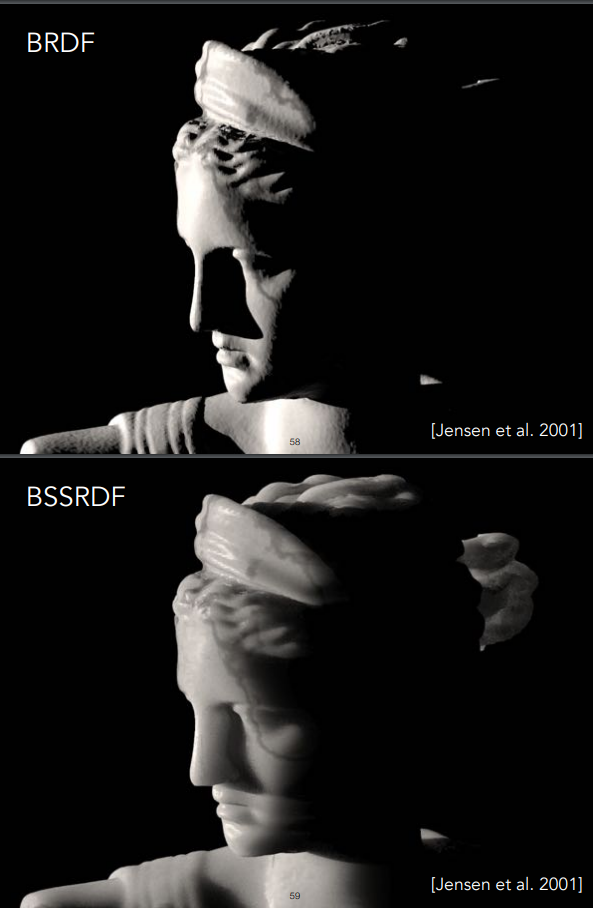
Cloth¶
- A collection of twisted fibers!
- Two levels of twist

- Woven or knitted
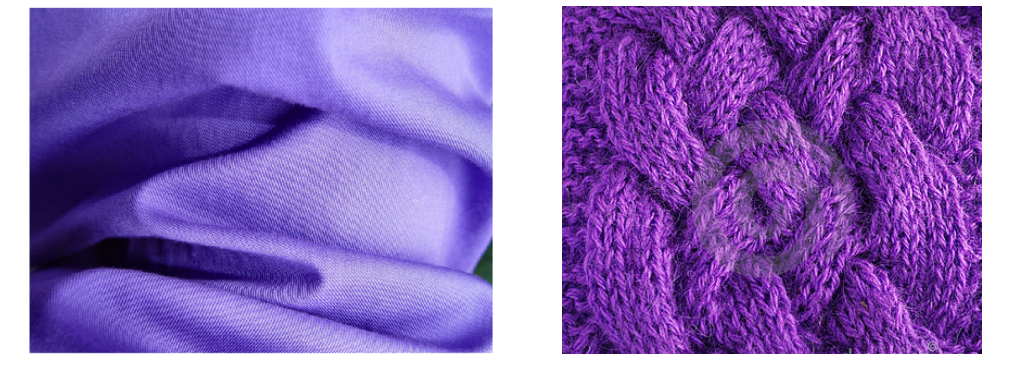
- Render as Surface
- Given the weaving pattern, calculate the overall behavior
- Render using a BRDF
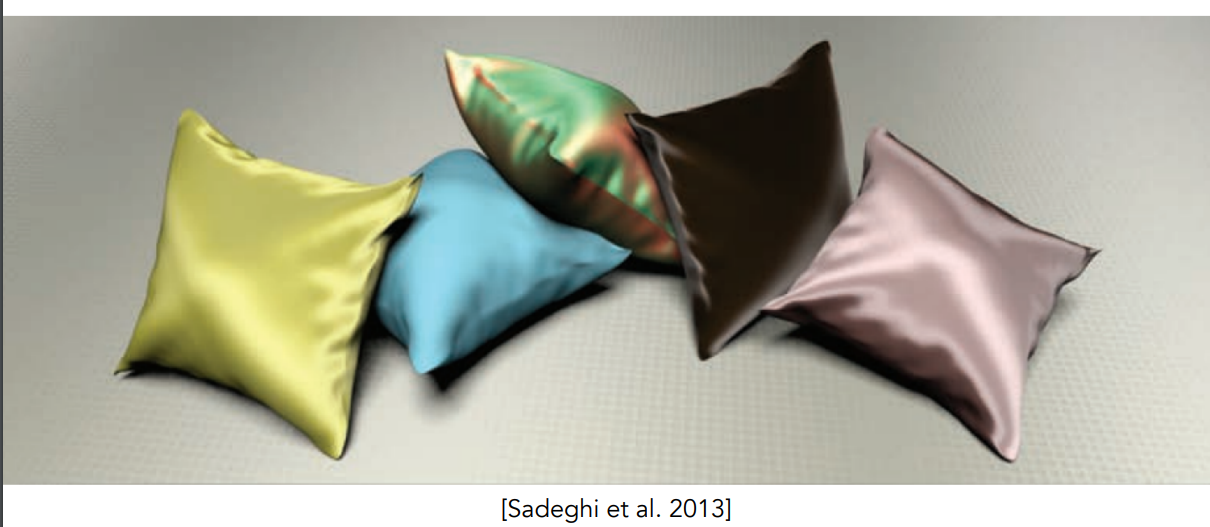
- Render as Participating Media
- Properties of individual fibers & their distribution \(\to\) scattering parameters
- Render as a participating medium
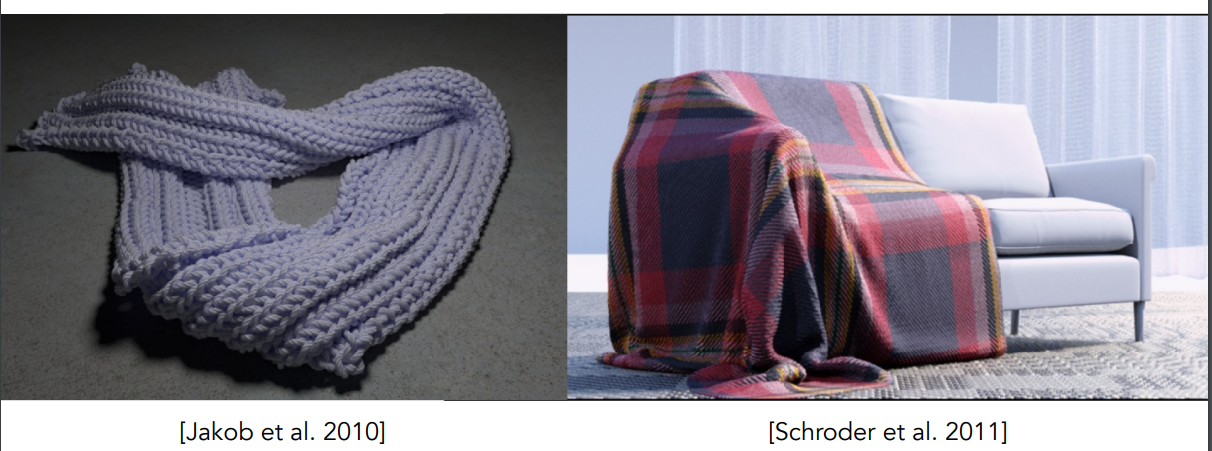
- Render as Actual Fibers
- Render every fiber explicitly!
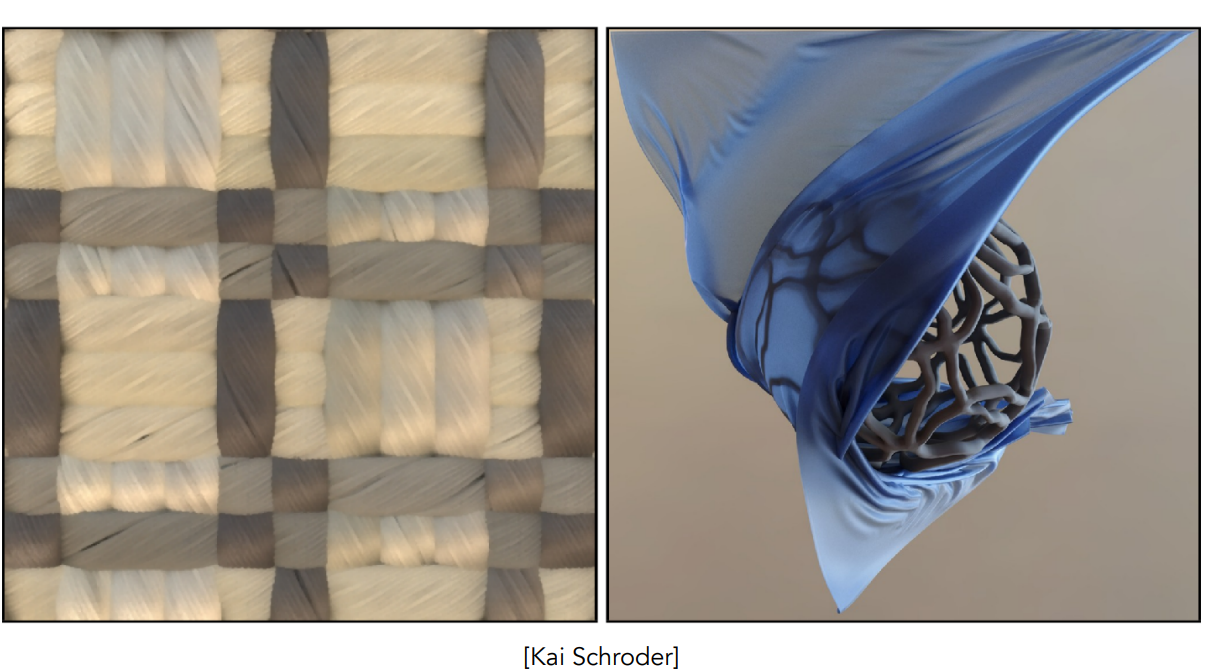
Detailed Appearance: Motivation¶
- 真实世界中的物体是有瑕疵的,描述方法得到的方法过于完美,所以显得不真实
- 可以在物体渲染时手动加入瑕疵
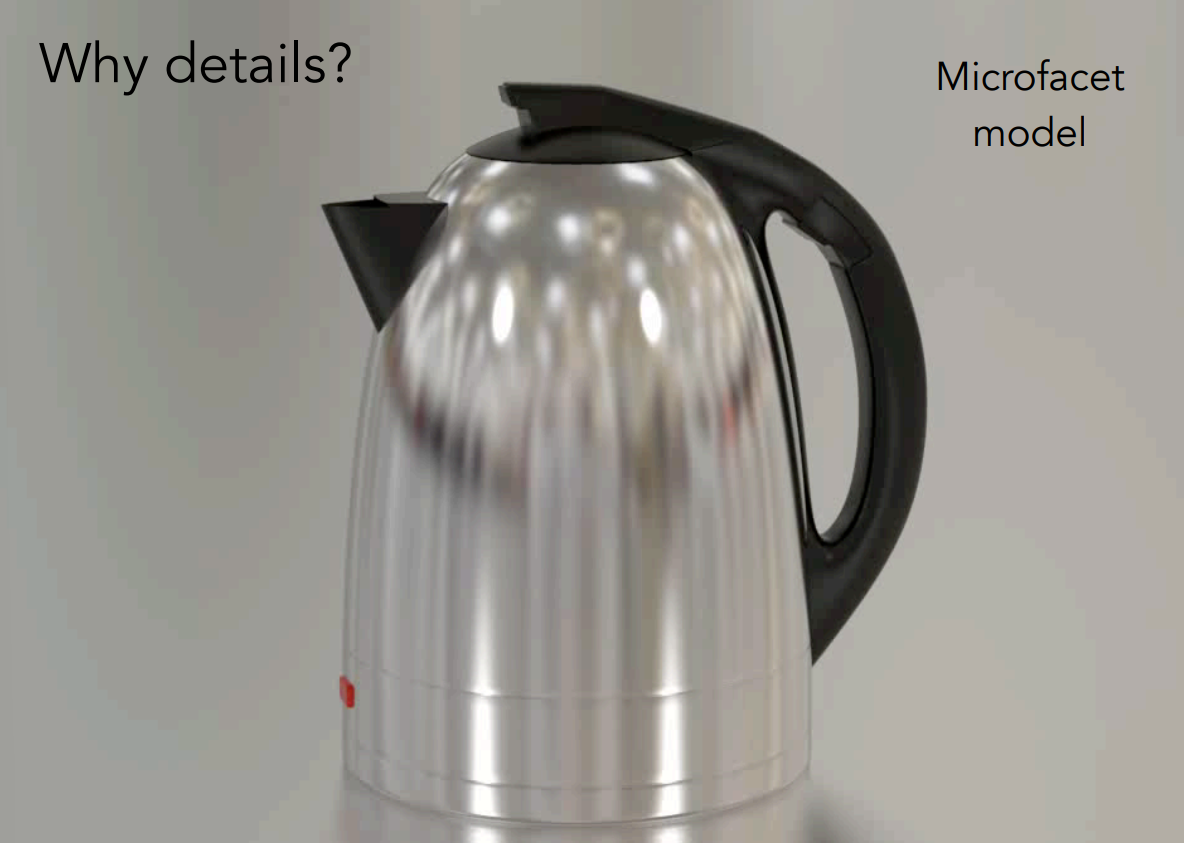
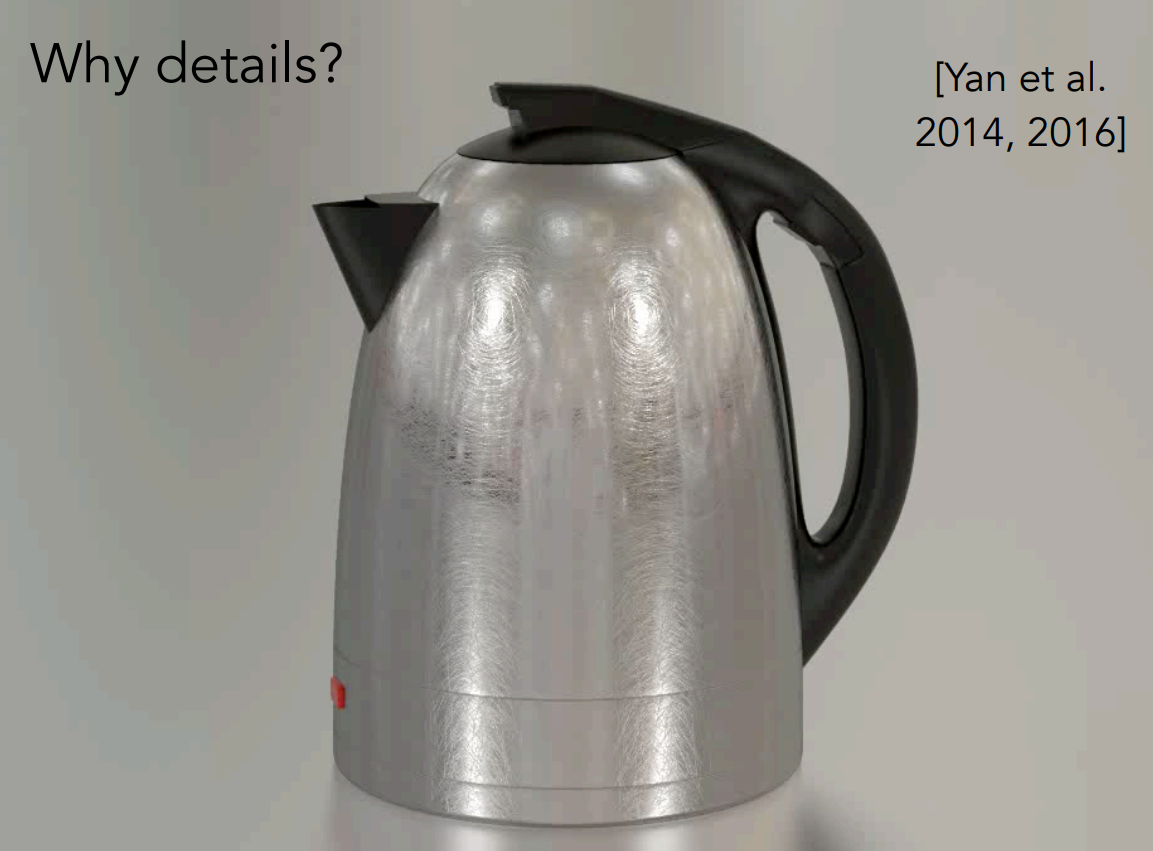
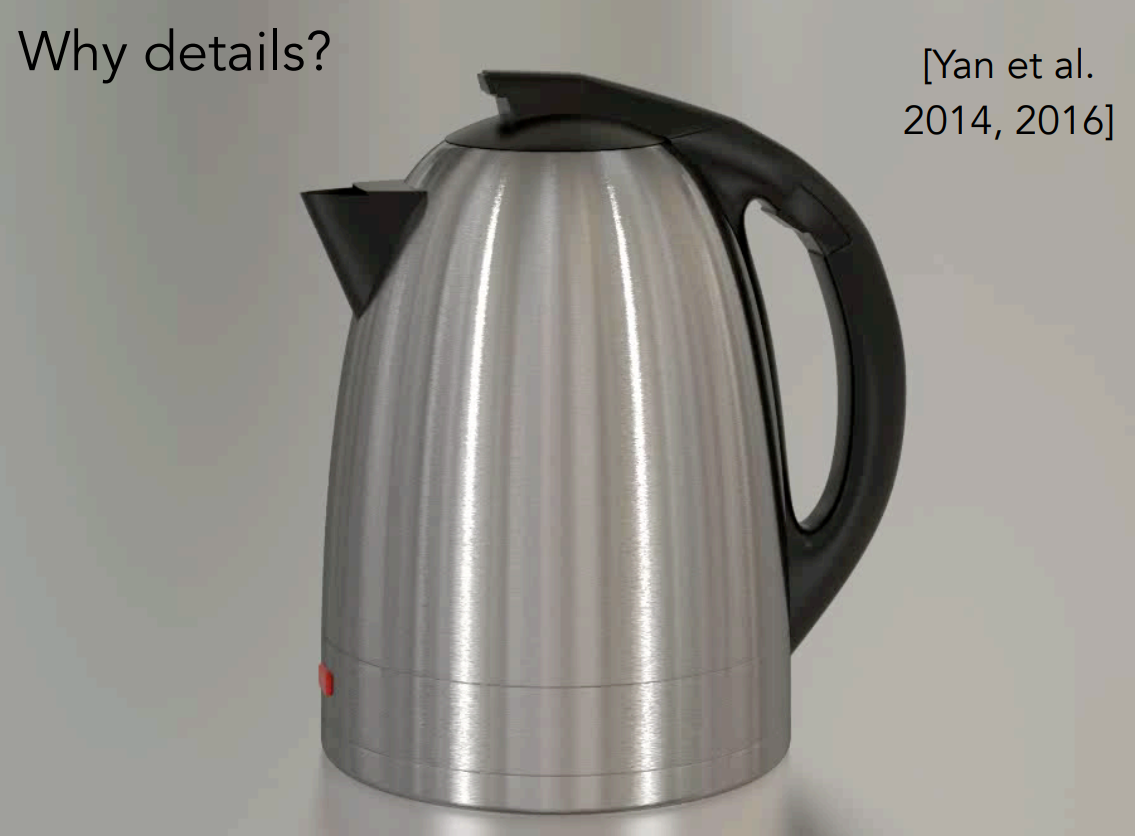
Recap: Microfacet BRDF¶
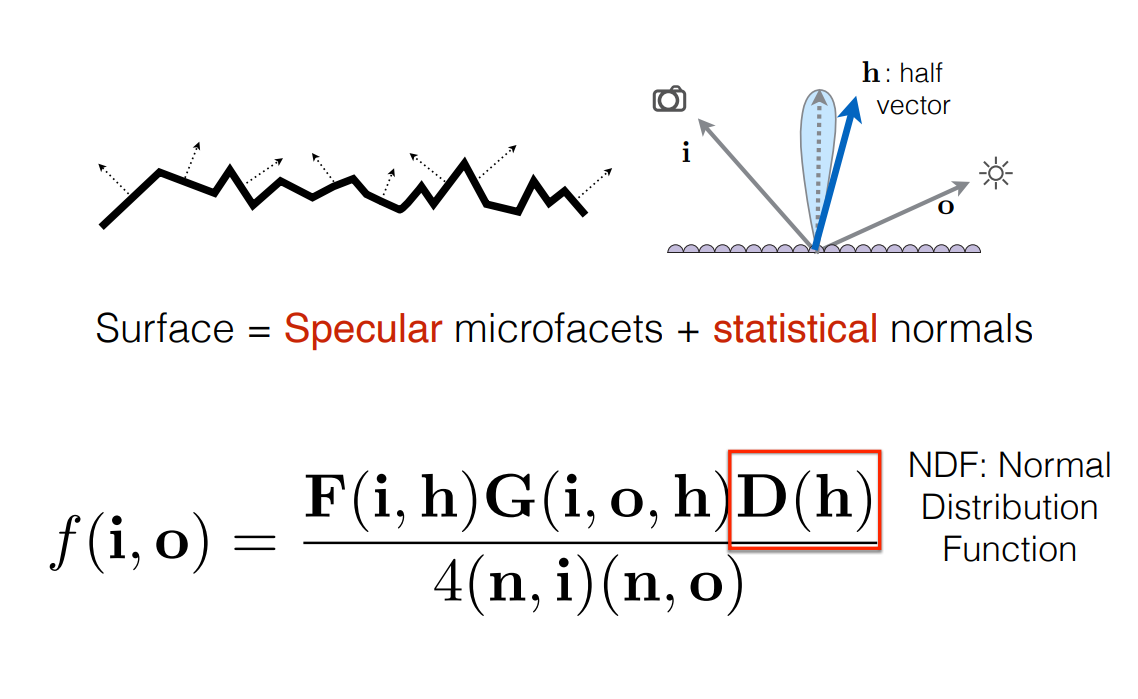
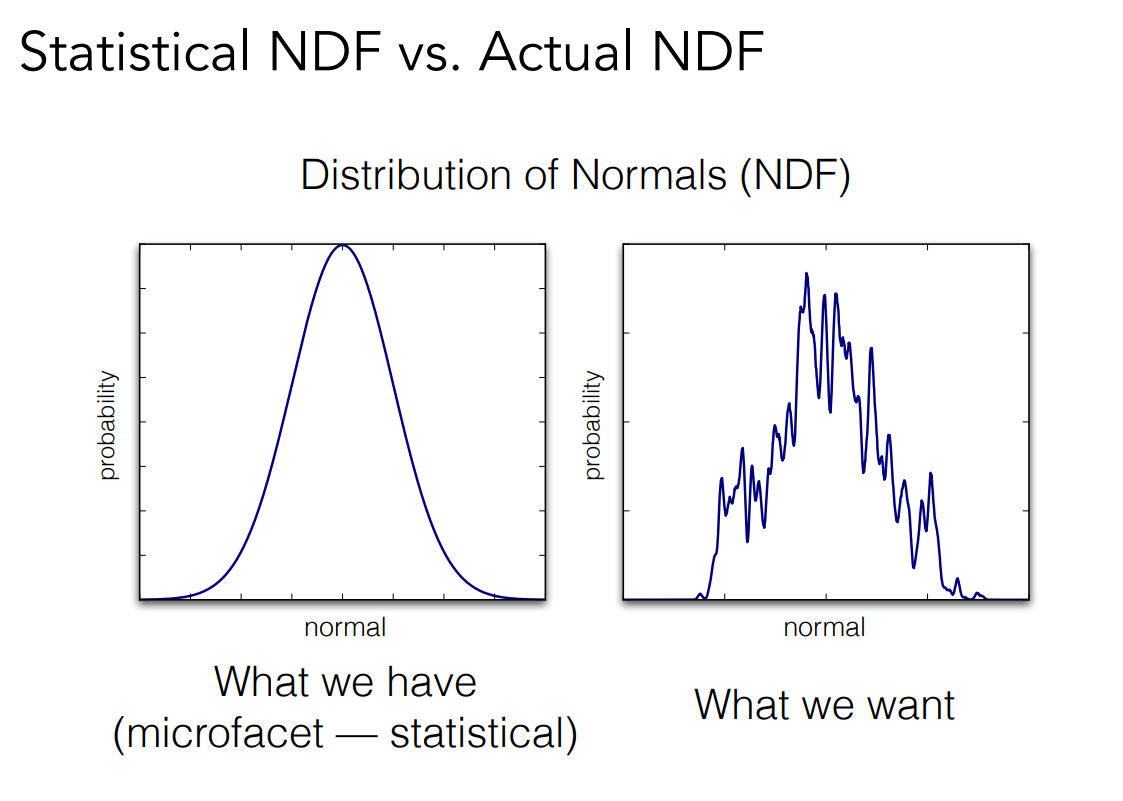
Difficult path sampling problem¶
- 微表面反射的光线反射不到摄像机上
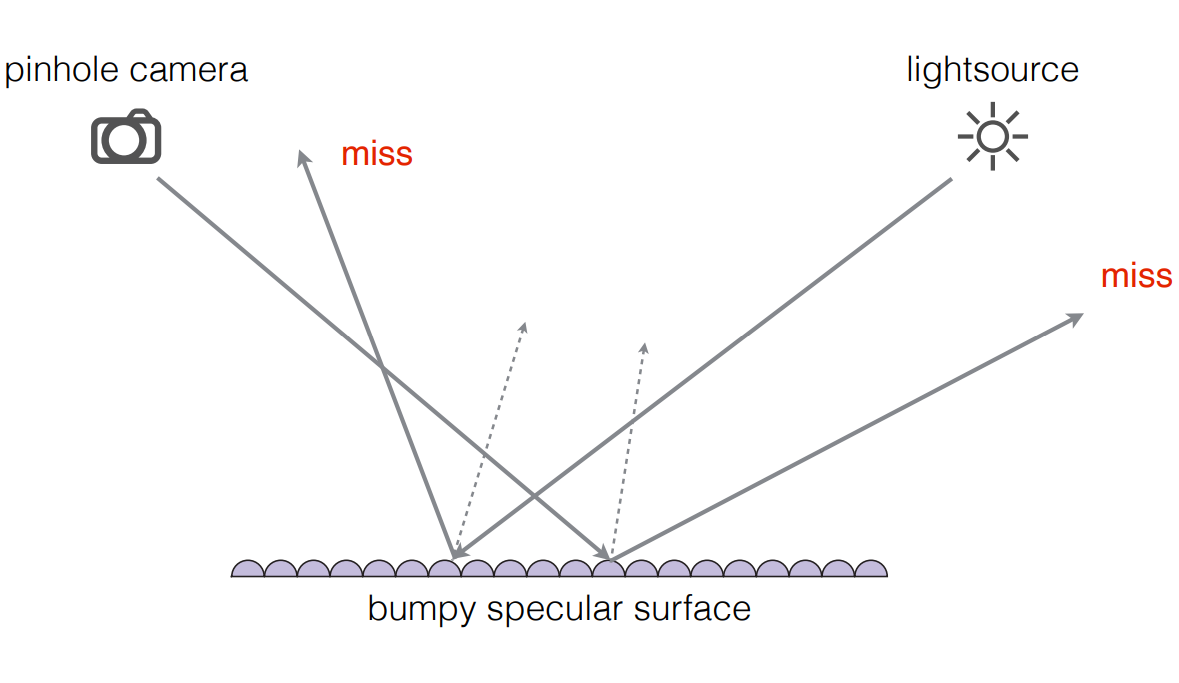
Solution: BRDF over a pixel¶
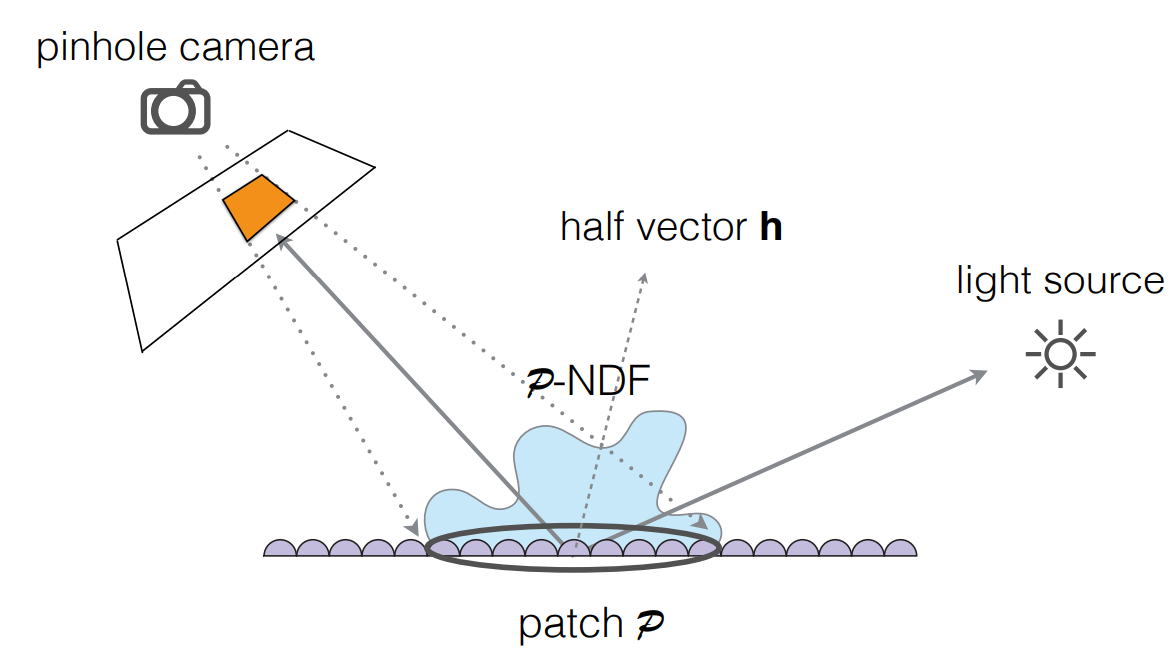
Recent Trend: Wave Optics¶
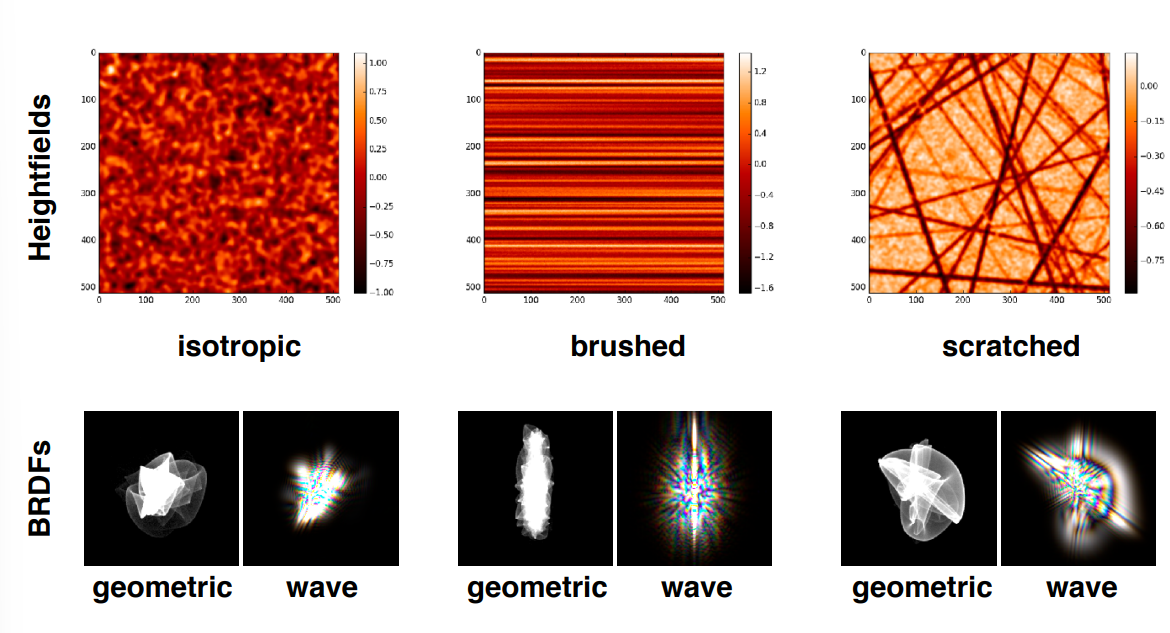
Procedural Appearance¶
- 定义三维的纹理:\(f(x,y,z)\) 查询得到纹理
- define details without textures
- Compute a noise function on the fly
- 3D noise \(\to\) internal structure if cut or broken
Last update:
July 30, 2023
Created: June 16, 2023
Created: June 16, 2023